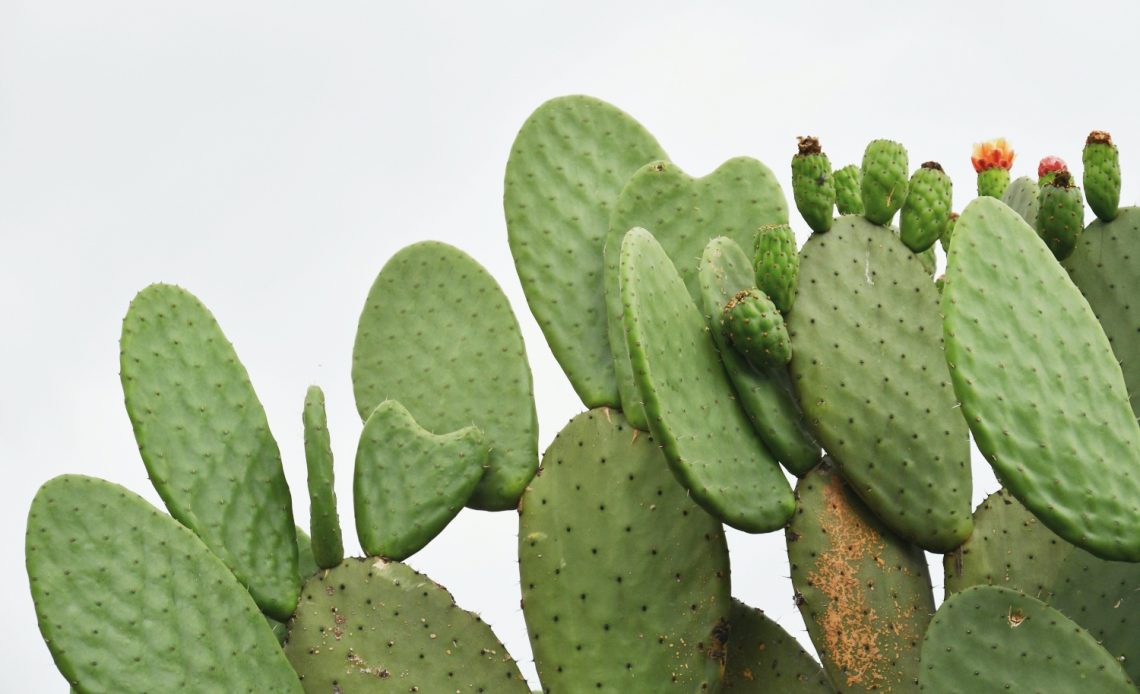

We’re here to help! Wild Yards is a completely free website that is 100% dedicated to helping you create a wildlife-friendly, sustainable yard. Read more
WildYards is reader-supported. When you buy a product through a link on our site, we may earn a comission. Every product is independently selected by our (obsessive) editors and our reviews are unbiased and objective. Read more about our mission or our privacy policy.
The cactus is the perfect plant for anyone who wants to grow something but doesn’t have much time to devote to gardening.
It’s also a no-brainer for landscaping desert-inspired backyards.
Cactus is easy to care for, but just because it’s easygoing, that doesn’t mean it won’t run into problems occasionally.
If you’ve noticed your cactus turning white recently, there are several reasons why it may be doing so.
Cacti often turn white in response to frost damage, overfeeding, and overwatering. However, insect infestations and nutritional deficiencies may also be to blame.
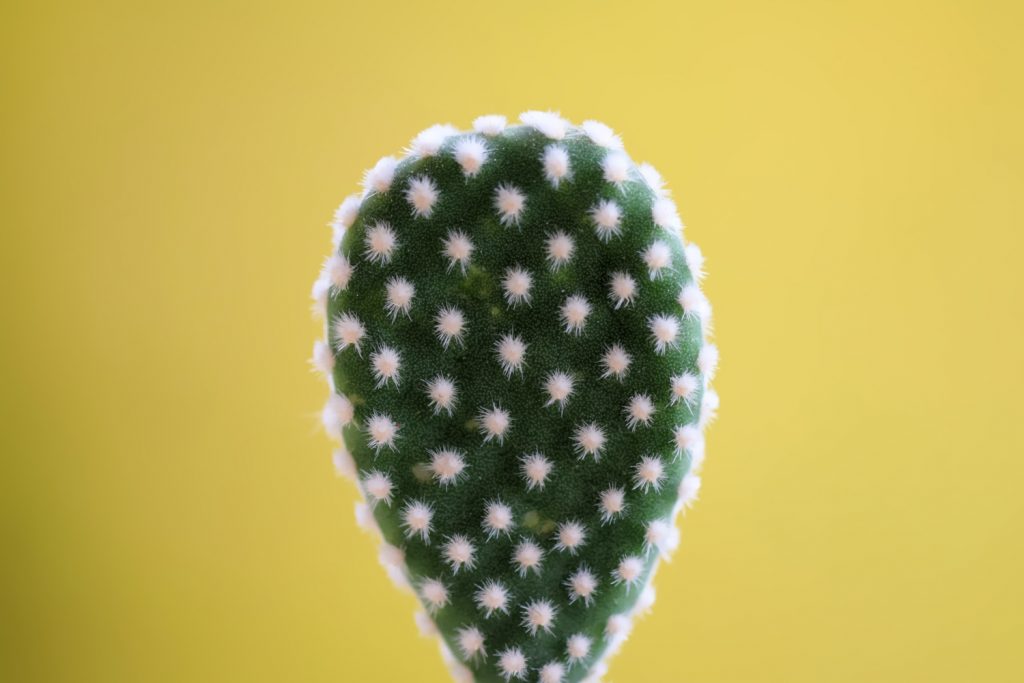
Overwatering
When cactus turns white, it’s usually because it has been overwatered.
Excessive rainfall and simply leaving the watering hose on for too long leaves little space for air to reach the plant’s roots, so they drown.
Move potted cacti onto your porch where they’ll be protected from the rain, and avoid watering an overwatered cactus until its soil dries out completely.
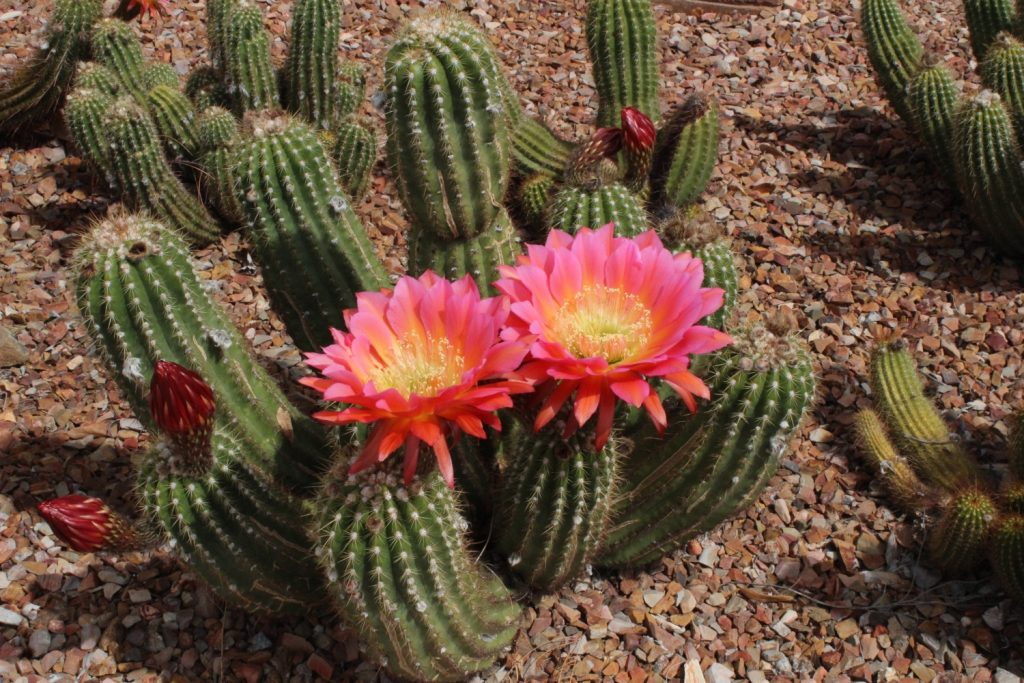
Rot
When a cactus plant has been sitting in overly moist soil for too long, it may develop rot. This is one of the main reasons why cactus falls over.
Rot can affect any part of the cactus, from the roots to the plant itself. If your cactus is suffering from rot, it may develop white discolorations. It may also seem to be shrinking.
Cactus plants that have turned brown or black due to rot are beyond saving. But cactus plants that are white can usually be treated.
Use pruning shears to trim away rotted roots, using a bleach dilution to clean the shears after each cut to prevent the spread of infection.
Once you’ve removed the diseased parts of the plant, transplant your cactus to a new location or set it in a new pot filled with potting soil designed for succulents and cacti to maximize the plant’s chances of recovering.
Underwatering
The cactus is a desert plant that doesn’t need much to drink. This is one of the reasons why cacti are so popular right now. Like succulents, they’re low-maintenance, and they make conserving water easy.
That said, your cactus still needs a certain amount of water to grow well.
If you notice your cactus turning white, check the soil. Dry, powdery soil an inch below the surface indicates that the plant needs to be watered.
You can also tell when your cactus needs more water by its appearance. Dehydrated cacti will start to look wrinkled when they’re thirsty. But a thorough watering can perk them back up quickly.
It’s worth noting that cacti that are growing in pots are more likely to become dehydrated than plants growing in the ground. Check your cactus’s soil every few days to make sure it’s getting enough water.
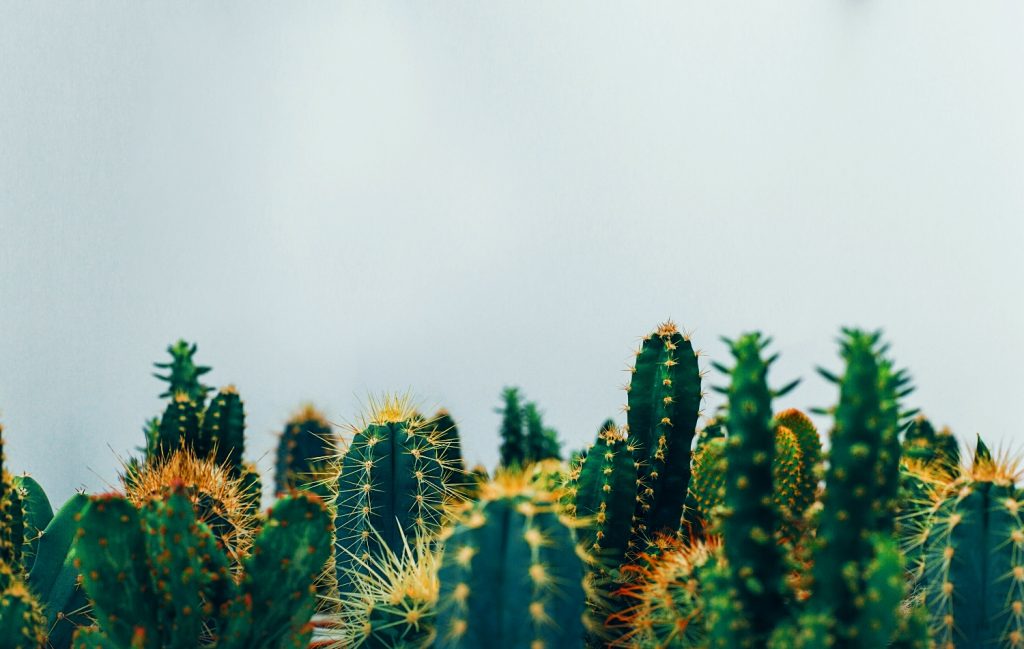
Nutritional deficiencies
Like all other plants, cactus needs nitrogen, phosphorus, and potassium to produce healthy green foliage and vibrant flowers. If your cactus is lacking any of these three nutrients, then it may turn white.
Of course, cacti rely on other nutrients, too. Iron, magnesium, calcium, and other trace minerals also play an important role in a cactus plant’s growth.
If your cactus is turning white, test the soil for nutritional deficiencies. If your soil is deficient, use organic materials like compost, bone meal, and kelp meal to help the plant meet its nutrient requirements.
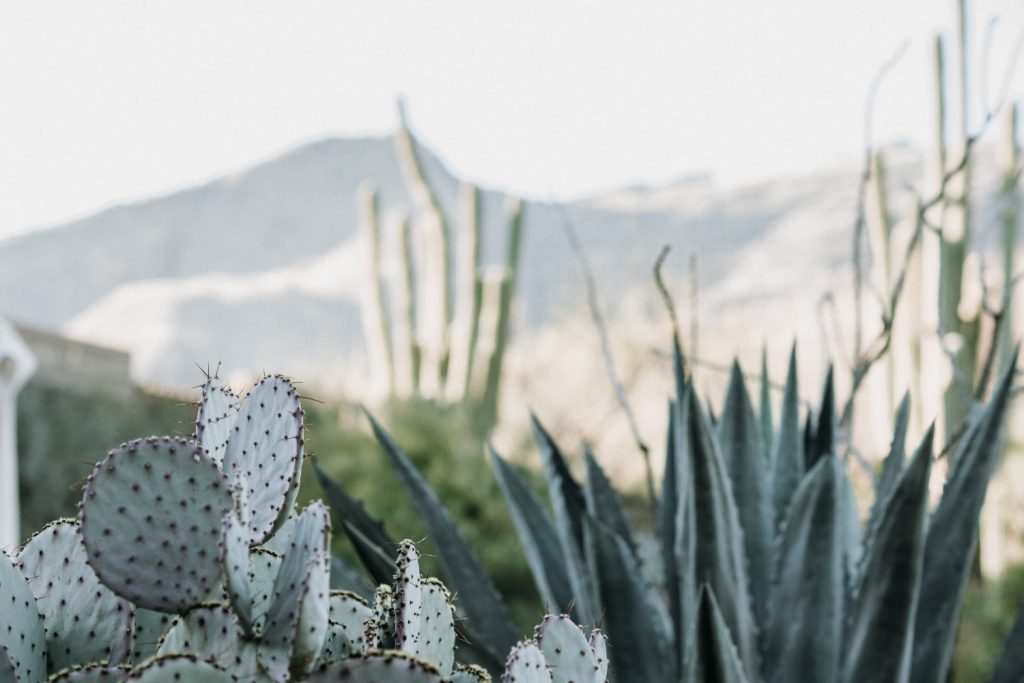
Overfeeding
Cacti aren’t heavy feeders. They’re also highly sensitive. Too much food can lead to rot and nutritional imbalances, which may cause the plants to turn white.
For best results, only feed your cactus plants once a month during the growing season. This will provide the plants with an ample supply of vitamins and minerals so they can continue producing healthy growth.
Consider testing the soil once or twice a year to determine which fertilizers will work best for your cactus plants, and to avoid overfeeding them and hindering their growth.
Sunburn
Believe it or not, cactus can get sunburned.
Some cacti are more sensitive to the sun than others. Christmas cactus, Easter cactus, and several other fast-growing cacti, for instance, prefer filtered sunlight and may turn white when they get sunburned.
Always research your specific cactus cultivar so you can be sure to meet their individual light requirements.
If you find your cacti are getting sunburned, then bring potted cacti into a shady area in the afternoon so they don’t get overheated. Transplant outdoor cacti to a new location where the plants will receive morning sun and afternoon shade.
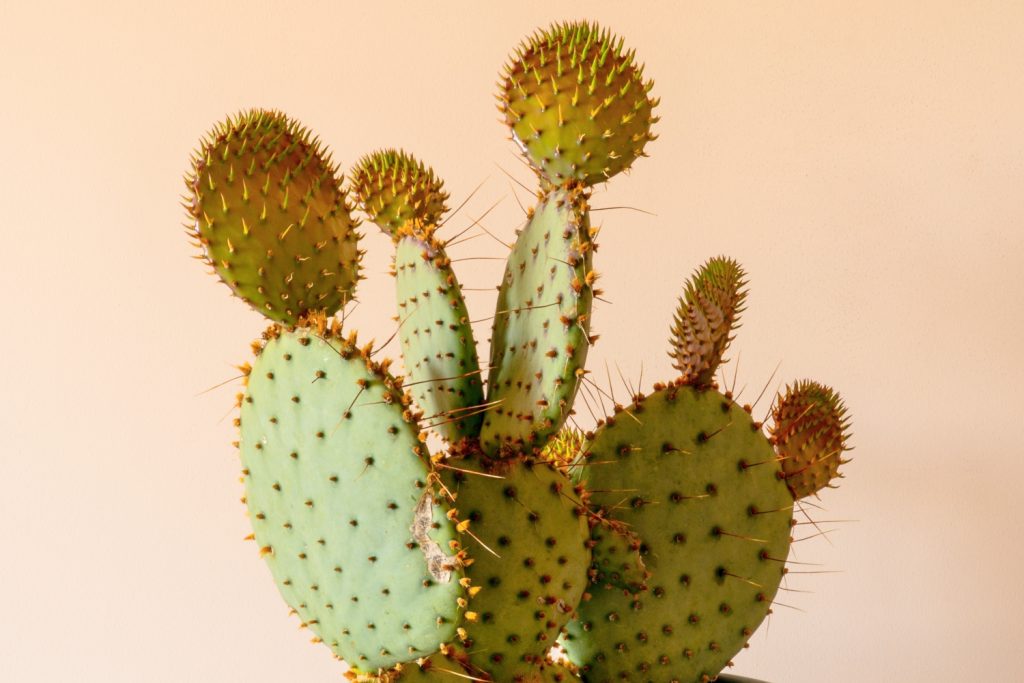
Insufficient sunlight
Protecting your cactus from the sun’s brutal rays will help prevent the plants from turning white.
But, to make matters even more complicated, plants that aren’t getting enough sunlight may also turn white.
Most cactus varieties need at least 6 hours of direct sunlight per day.
The cooler the growing zone, the more light the plants will need, and the warmer the growing zone, the less light the plants will need.
Keep in mind, though, that how much sunlight your cactus will need depends on its variety. Always double-check your cacti’s growing requirements before planting to make sure they will get enough sun.
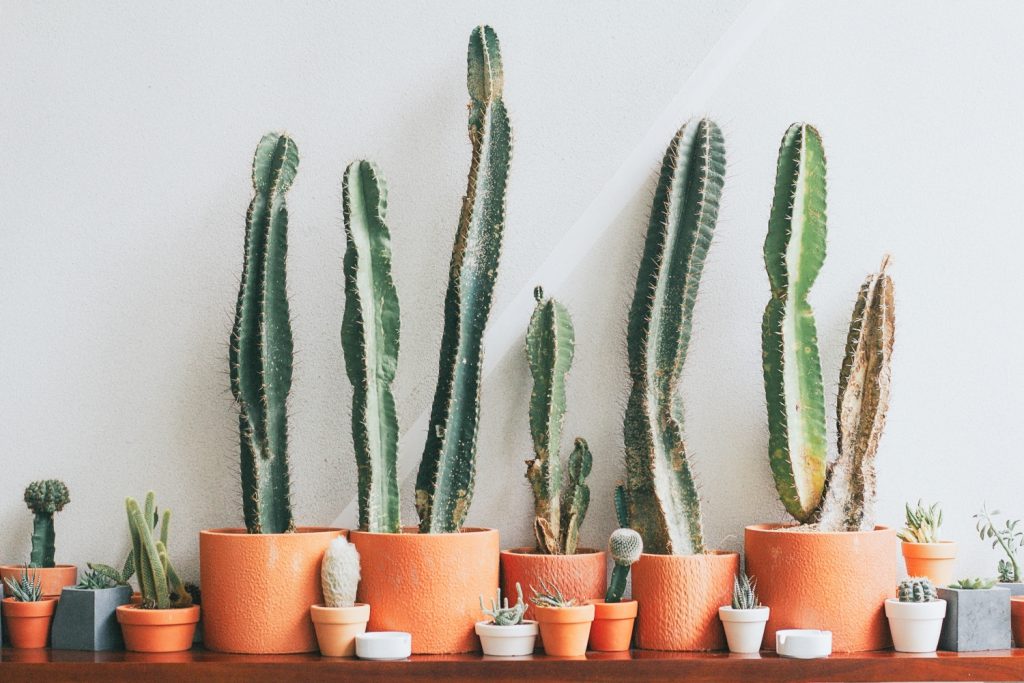
Frost damage
Cactus dislikes the extreme cold. If you accidentally left your cactus out overnight during a freeze, then it has probably turned white due to frost damage.
Unfortunately, cacti that have turned white due to frost damage will not regain their original coloring. But, if the plant survives, any new growth it produces will have a healthy appearance.
If your cactus is growing in the ground, then use old sheets, a tarp, or a packing blanket to protect it from the chilly weather.
Overwinter potted cacti indoors, being sure to situate them in a warm, sunny location.
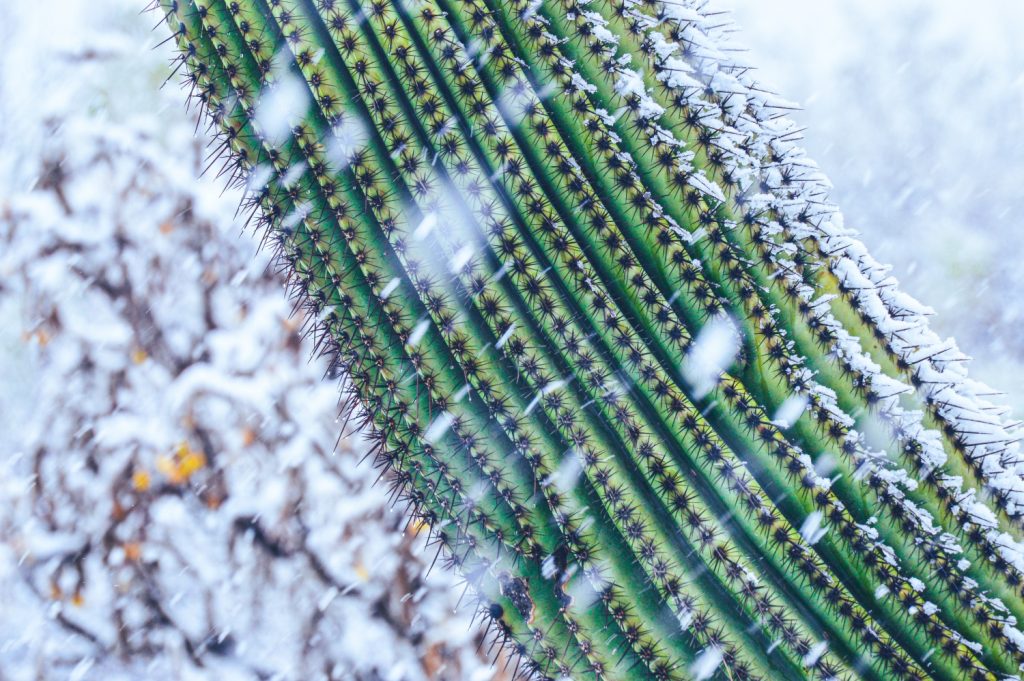
Rootbound
Cacti are incredibly low-maintenance, but some people take that to mean the plants don’t require any care at all, and that simply isn’t true.
Like any other plant, cacti need to have all of their growing requirements met to grow healthy. You may not have to do much with them. But you still need to provide them with adequate care.
Neglecting your cactus plant can have serious consequences.
Maybe you’ve kept your potted cactus plant on the same shelf for years, and maybe it has always looked great. But if it suddenly starts to develop white leaves, then the plant has probably become rootbound.
When kept in the same container season after season, cacti will soon run out of room to grow. With no more space to spread their roots, the roots wrap around themselves and choke the life out of the plant.
Re-pot your cactus plants regularly to make sure the roots have plenty of room to move. That way, the plant can absorb all of the air, water, and nutrients it needs to make food for itself.
Mealybugs
Did you know some animals actually eat cacti? But they aren’t the only ones.
Mealybugs are soft-bodied insects that can do your cactus a lot of damage.
These tiny white bugs feed on the cactus plant’s sap, depriving the plant of the energy it needs to survive. The result is pale, anemic-looking foliage.
Mealybugs are covered in a white waxy substance. They can often be found in groups, so they’re sometimes mistaken for mold.
Keep an eye on those white spots on your cactus. If they seem to move, then break out a homemade insecticide and give the plants a once-over.
Mealybugs are generally easy to combat, but you’ll need to continue applying an insecticide until all signs of the bugs are gone.
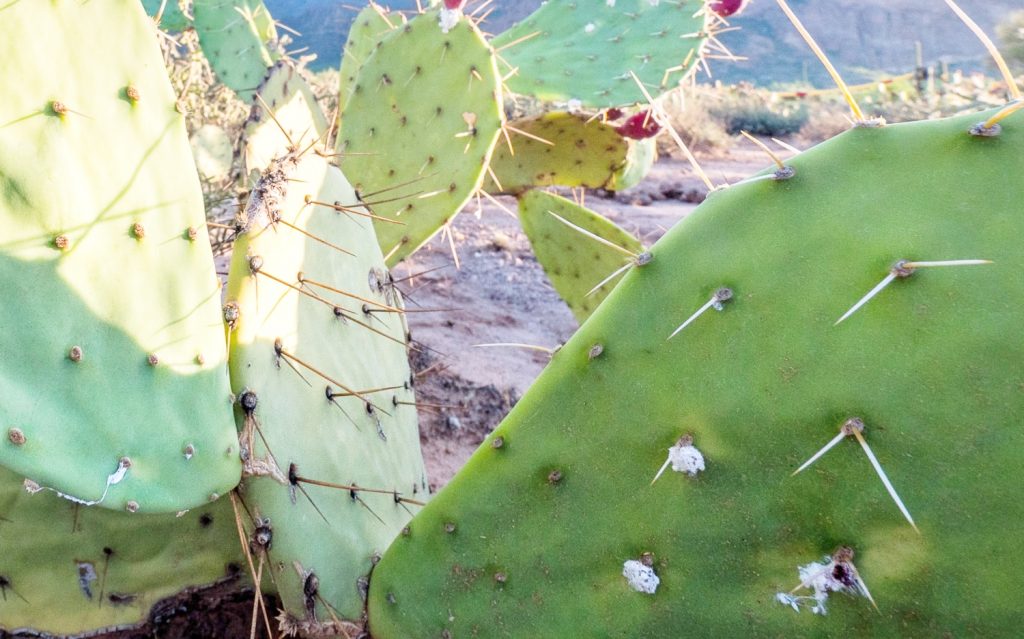
Cactus moths
Native to South America, the cactus moth is an invasive species that made its way to the United States in the 1980s.
These unassuming brown moths lay their eggs on cacti, where the larvae can feed on the plants once they hatch.
Cactus moth larvae can destroy cacti in a short period of time. These insects bore into the plant’s stems and leaves, depriving the plants of the food they produce for themselves.
If your cacti are showing signs of a cactus moth problem, spray the plants with an insecticide and trim away infested portions to control the infestation. Dispose of the affected trimmings by burning them.
Poor air circulation
If your cactus is growing in a poorly ventilated area, the increased humidity could be contributing to mold, which can make your cactus turn white.
Powdery white mold often develops in the nooks and crannies of cacti’s foliage.
This mold can be removed with gentle scrubbing. Use Q-tips and an old toothbrush to break the mold apart. A dampened rag can be used to wipe the materials off of the affected area as well. Just be careful not to touch the cacti’s spines.
If you find a patch of mold that is particularly difficult to eradicate, use a bit of rubbing alcohol to remove it. Avoid treating the entire plant with rubbing alcohol, however, as it can dry the plants out excessively.
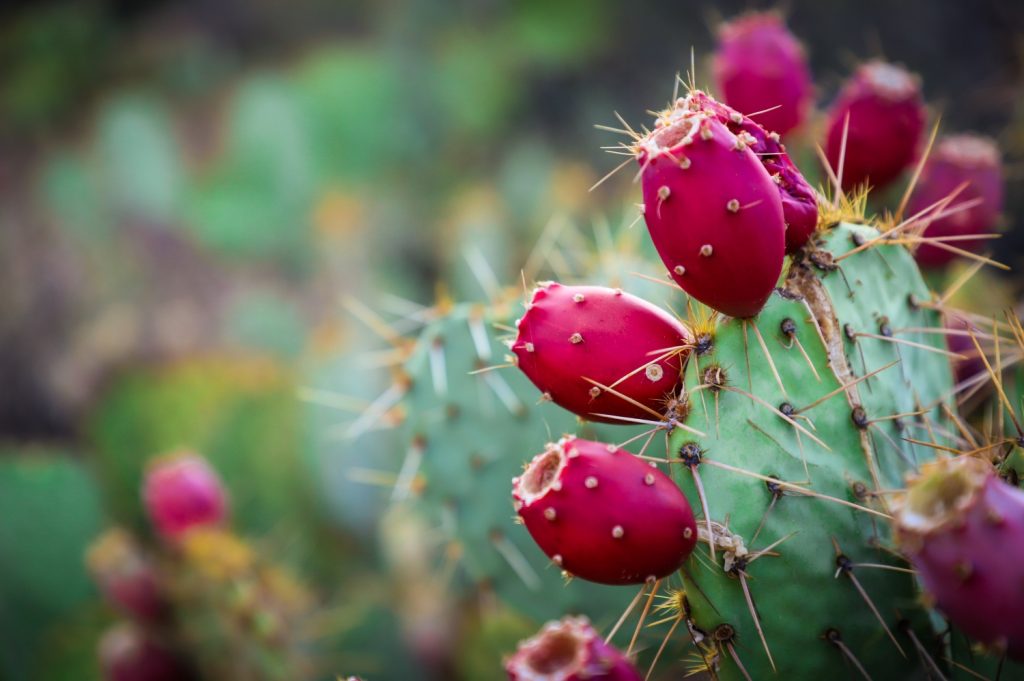
Tips for growing healthy cactus
Here’s a simple checklist of things you’ll need to do to keep your cactus in the best shape possible:
- Plant cacti in well-draining sandy soil
- Repot the plants regularly
- Make sure the cactus gets enough sunlight
- And just enough water
- Keep the plants in a warm area away from cool drafts
- Fertilize them monthly, or less
By meeting all of the plant’s basic growing requirements, you’ll be doing everything you can to ensure your cactus stays healthy and green.
